Last Updated on by Mitch Rezman
Firstly I need to address the “peanuts are bad for parrots” urban legend.
If you leave a pizza on the kitchen counter for two days it will get fungus.
Cheese in the best of circumstances will grow fungus in the refrigerator after about a week.
Parrot food that gets wet from say, splashed bathwater, can get fungus pretty rapidly.
Fungus will grow on peanuts if they are not stored properly as in perfectly dry.
Let’s look at the largest producer of peanuts in the world, South America.
South America also has the largest population of parrots, in the world – why are parrots not falling out of the sky all over South America?
Because the peanuts they eat are fresh.
It’s all about storage – peanuts bought in sealed bags with air removed from name brand parrot food manufacturers are just fine (says the guy who sells 20,000 pounds of bird food a month).
Hagen, the largest producer of pet supplies on the planet offers Hagen bird and parrot food in three lines – Living World (seeds), Tropimix (blend of seed nuts, fruit with pellets) and Tropican.
Hagen Tropimix and Tropican parrot foods contain peanuts.
Hagen is distributed in 70 countries.
I know the folks at Hagen and the Hagen Avicultural Research Institute.
They have close to 250 pairs of of parrots they’ve cared for over the last 30 years.
They have three full-time on-site avian veterinarians as well as veterinarian techs.
They work closely with Ontario Veterinary College at University of Guelph to produce world class bird food CONTAINING PEANUTS!
I hope that sets the record straight.
Moving on to answer your original question about almonds, almonds are fine raw or roasted just not salted for birds (or old guys with high blood pressure:-).
You’ll find almonds in the shell, in better parrot food blends like the aforementioned Hagen Tropimix and Higgins Safflower Gold parrot foods
Peaches our Senegal parrot, loves almonds.
We give her both shelled and unshelled.
If I see a almond in the shell she got bored with on the cage floor or a play area, I keep nutcrackers close by, and will start a crack in the shell which she’ll then be happy to finish.
Walnuts are another great nut, big birds from African grays to cockatoos to the big macaws can probably crack them easily while holding it in their zygodactyl foot.
For a Senegal parrot it’s beak is too small to start a crack in the shell, so I do and spread the pieces over over her forging boxes and foraging Frisbees.
Sunflower seeds are also a great treat.
Some birds are fed too many but in moderation they are fine.
Sunflowers can come in both shelled and unshelled versions.
I like the out of shell version for both training (it can be eaten quickly without having to wait for her to remove the shell) and filling her business card forging boxes.
I use small boxes that may be a smart phone or Harry’s razor blades came in or some other small electronics.
I fill the boxes with business cards and then pour sunflower kernels in between all the business cards so that she has to move or remove the cards in order to reward herself with the sunflower kernels.
Some bird food blends like Higgins Safflower Gold have no sunflower and use safflower seeds instead.
The difference in fat content between the two is not that different, but the decision is yours.
Other nuts to consider serving your parrot are
- Pistachios
- Hazelnuts
- Brazil nuts
- pine nuts
- pecans
We keep all of our bird treats in canning jars and always throw in a packet of desiccant in the jar to keep the vessel moisture free.
Peanuts are actually legumes, almonds and pistachios are fruits and pine nuts as well as Brazil nuts are considered seeds, but nuts in general are pure energy for your bird.
Catherine and I have been on the KETO diet for over three months now.
I bring this up because ironically the diet is closer to something birds would eat than mammals.
Because the diet is close to zero sugar and very low-carb while introducing high protein foods I find myself sharing unsalted almonds with Peaches.
I enjoy all of her treat food nuts too.
Putting this in perspective we always recommend a well-rounded commercial bird food diet that is available 24/7 in your bird’s cage.
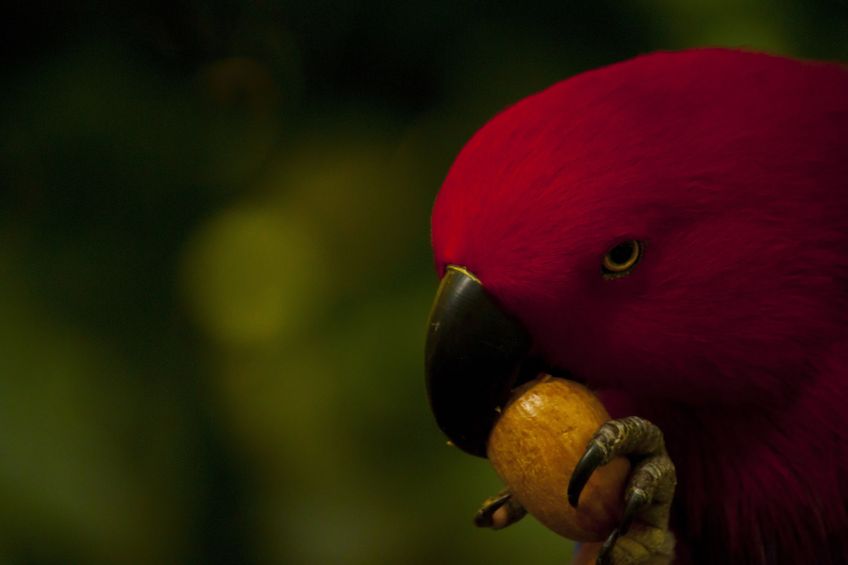
Combining nuts which are great for essential fatty acids still do not provide enough protein for a parrot’s metabolism.
A large parrot like an African grey can have upwards of 8000 feathers on its body.
It will replace these feathers every 1 to 2 years by molting.
Feathers are formed from amino acids and amino acids are derived from protein.
You will find precise protein values on the backs of the bags of any commercial bird food blends so you don’t have to guess about what to feed your bird.
Please remember because healthy human food doesn’t necessarily make it healthy for your bird.
You are a mammal, your parrot has a totally different set of respiratory, cardio, integumentary, muscle and nervous systems that need to be respected for what they are.
From Wikipedia we learn:
Mammals are the vertebrates within the class Mammalia (/məˈmeɪliə/ from Latin mamma “breast”), a clade of endothermic amniotes distinguished from reptiles (including birds) by the possession of a neocortex (a region of the brain), hair, three middle ear bones, and mammary glands. Females of all mammal species nurse their young with milk, secreted from the mammary glands.
Parrots, also known as psittacines /ˈsɪtəsaɪnz/,[1][2] are birds of the roughly 393 species in 92 genera that make up the order Psittaciformes, found in most tropical and subtropical regions. The order is subdivided into three superfamilies: the Psittacoidea (“true” parrots), the Cacatuoidea (cockatoos), and the Strigopoidea (New Zealand parrots). Parrots have a generally pantropical distribution with several species inhabiting temperate regions in the Southern Hemisphere, as well. The greatest diversity of parrots is in South America and Australasia.
end Wikipedia
The point I’m trying to make is that as much as we try to impart our human values on our birds, they don’t get it because of their 99 million years of instinctual expectations.
An example, I was speaking with a woman on the phone the other day who recently rescued a 12-year-old Congo African gray.
The bird had begun to show signs of feather plucking, not too severe but the first time she and her husband left home with the bird locked in the cage, the grey had plucked out all but one or two tail feathers.
We talked at length about the importance of having more than three toys in the cage irrespective of all the other activities the bird was privy to throughout the home.
This included 6000 ft.² of what the woman thought would be her African grey parrot’s perfect environment.
One of the biggest challenges that I face is helping people understand that as far as the bird is concerned flying over a 6000 ft.² house is two wing flaps.
Parrots in the wild have access to dozens of not hundreds of square miles to explore during the day.
Various safe areas to spend the night.
Another way of saying, what satisfies us humans, does not necessarily satisfy the instinctual expectations of your bird.
Circling back to the original question (me, sidetracked)?
Let’s just not offer nuts to our birds for the sake of offering high-value treats.
Make your parrot work to find these tasty high-fat morsels among foraging opportunities.
Sunflower seeds are to birds what McDonald’s French fries are to humans, make them available proportionately.
Above all, weigh your bird at least monthly.
Rapid weight changes are signals of potential ill health.
You have the tools, now use them.
quora answer written by mitch rezman
approved by catherine tobsing
Here some interesting comments to this post on Quora.
Jason Ashley
This is not completely accurate information. The peanut fungus begins in the shell BEFORE harvest. I agree the risk is minimal, but real irregardless. Please do careful research from multiple sources before arriving at your own conclusion. The answer was very well written and mostly correct, however storage after harvest makes no difference. If the shell is fungus infected, it began in the ground. Also, the comparison is falsely founded to begin with, considering the factors involved. Geographic location, wild vs domesticated birds. Myself personally I would never play Russian roulette with my bird unnecessarily, and to save a few cents from peanuts versus any other type of nut. Just because they love them and prefer them doesn’t mean that it is good for them.
Profile photo for Mitch Rezman
Mitch Rezman replied
Firstly “irregardless” is not a word – We have been selling peanuts to pet bird companions and our flock for about 40 years without a single problem because we know how to buy. One of the things we learned from selling 20,000 pounds of bird food a month online since 2002, with peanuts – storage is e…
(more)
Alicia Manolas
Excellently put! As an Avian specialist, Animal Behaviourist living in Australia, I see far too many parrots kept in a 2 foot x 2 foot x 2 foot “square Traditional Australian cocky cage” also known as corpse-cages, on one dowel perch, fed a diet of black sunflower seeds, with the only water source a tiny slide in metalhalf oval made of zinc covered metal which even when “clean” leaves a poisonous film on the top of FRESH water!!!
Either no toys, or one toy, the traditional australian “cocky bell”, poisonous metal (natch) sometimes with bonus flaking paint. These cages of doom are traditionally hung outside the house in the nearest tree, to act as a driveway alarm, or on sun facing verandahs, no weather protection for 8/10 which used to be 10/10, and often the bird cages stiff front facing vertical sliding door has been welded shut to prevent escape, that is, welded closed with the bird in there going insane.
Times were almost every Aussie farmhouse had one of these, then suburbs too, but in the past 120 years folk have got tired of being (deservedly in my opinion) viciously bitten through the bars, and living with continual screetching from a partially to entirely bald and insane, as in, mentally completely broken, parrots.
Sadly however, parrot education in Australia is still extremely hard going, and explaining to people that they cant just jam a large parrot into one of these monstrous arrangements, expect it to thrive and be a little girls cuddle pet whenever she feels like pulling it out by the tail to play with (the supposedly “only way” to remove a parrot from one of those cages, a cocky cage). Add to that often pugnacious disbelief when a more suitable set up is suggested, like this one that made me retch: “Last 5 generations of our family kept cockies this way Mate!
Only bad things we gotta keep cuttin the cocky cage open to replace the little buggers, thats why we come to you, your supposed to be some kinda shithotbirdgirl, but we figured stuff good too right, ya see but leave it long enough between gettin the new un an the old ones corpse rots through the cage bars base!”(exclaimed happily to me)-”an then you get the next one young enough while it’s little an ya can jam it in through the seed hatch see? No need to cut me weld!” I was literally sick after dealing with that free client, and there is no way in this country to stop these people doing what they ‘know’ over and over again, no way to stop them obtaining parrots.
I mean we are talking a 2 to 2.5 inch high seed hatch, maybe 4 inches wide, and jamming through it a live young-adult bird, usually a Pink and Grey Galah (roseate breasted galah) a Corella short or long billed, a Sulfer Crested Cockatoo, Major Mitchel Cockatoo or more rarely a Green 28 or a Citrine Crested, all depending on where you live and what has fallen out a nest when a farmer has been logging, raised “traditional Aussie style” on wheatbix breakfast cereal mashed with milk or water (truly not good), then sold or given away to a “Traditional” Australian parrots life, by its babyhood “saviour”.
Im there trying to gently explain that with a different set-up there would have only BEEN 5 BIRDS in that whole 5 generations, instead of 5 birds per nominated family bird looker-afterer, but nothing I say will stop them unless I can cite ease of care or cheapness of care.
Now add in the fact that breeders often sell to anyone and a person can get a hold of a ‘foreign looking parrot’ like an African Grey, or an Eclectus or a MACAW fairly cheaply indeed now days… and jam THAT into one of those terrible Australian cocky cages. Blue and gold macaw babies at 4months selling for as low as AU$1800 even. The added purchase expense deemed worth it for the boastability, the Wow! factor. Words fail.
This is what My fight to promote parrot-care education is all about, it’s not just the soley seed diets filling liver and kidneys up with oils the bird can’t excercise off by flying 20 miles per meal.
Which then causes the abdominal area to be plucked first, because it gets sore to touch, and inside too; it’s all of it. The too small cage, the poisonous water container, no toys, no intelectual or mental stimulation, no physical stimulation (and I mean non-sexual, like chewing up stuff- all parrots have a huge inbuilt need to be able to alter the environment around them and create via destruction-born of all those years of evolution, we cannot expect them to suddenly lose it because it is inconvenient to us humans!), no loving touch of human hands, no fingers preening nor fellow bird to preen by beak, these poor parrots end up horrendously touch starved, a flock animal cut off from all physical connection, and I don’t count the rodents that often come in the cage after the seed and eat feathers off the sleeping bird!
The dowel perch is its own torture device, often coated with arsenic to stop it being chewed! And dont forget that the dowel is both too small a diameter and always too smooth; parrots were not designed for cylindrical trees, thus dowel creates pressure sores on the soles of their feet… which then go all crusty and get infected.
For some “lucky” birds this results in ‘helpful minded’ families POWERHOSING the poor birds feet through the cage, (you can imagine how well that goes) followed by attempting to pour on bleach, chlorine, bettadine, peroxide or disinfectant of some sort, again through the cage so no one gets savaged, and onto the poor parrots feet.
Add exposure and weather extremes, children (and vengeful from having been bitten in the past, adults) poking the parrot through the bars with sticks, and you have a tradition quite as vile as that of Indians and (Pakistanis?) abusing Indian Ringnecks, Alexandrine Parakeets or Eclectus in tissue-box sized, 5 sides are solid, bars only on front, cages carried around on a strap around the mans neck, in order to tell auguries: Ascertaining the wishes of their gods, making big life decisions or difficult decisions etc, usually depending on whether the parrot picks up the seed it is offered on its left side or the one it is offered on its right side, first: the handler is paid and the question asked and the two seeds placed. A tradition of cruelty but one which is thankfully dying out.
It is bad enough Australia has a tradition of keeping all small parrots, parrotlets, Budgerigars and Cockatiels etc, in always too small cages; a tiny cage tradition bourne of Chinese canary cages… because in 1900 those were the only little cages you could buy in metal rather than eadible to parrots, woven bamboo or withies cages.
That small parrot keeping tradition has spread world wide, and 90% of the worlds cage suppliers still come from Asia, to this very day. Most cages currently sold in petshops touted as fitting a Budgerigar or Weeiro aka Cockatiel are in reality, barely acceptable in size to be a carrying cage for avian vet trips!!!
So next time you meet an Aussie, talk parrots with them, please, educate them and ask them to spread the word. I’m the only one doing this free most of the time in Perth, and definately not commercially or as a business, on the West Coast, in Western Australia, but free birdy help can also be gotten free, 5000 odd miles away, over on the other side of the country, for those on the Eastern Coast. All issues pet avian, Messenger me by preference! Thankyou.
Michele Babcock
I am horrified.
Dorothy Gale
This makes me sick, so horrible.
Gorden Russell
The bird can get his own pistachios. At the price they are now I’ve stopped buying pistachios for my wife.
Pamela Uribe
I feed my birds peanuts everyday. It comes in the package of food that the store I bought my birds at mixes and sells with his own label.
There is also pistachios and pecans and pine nuts mixed in. They love it and are thriving on it. I also supplement their food with fresh fruit and veggies, and THEY supplement their diet with what’s on my plate. It’s funny, I read that same thing about peanuts and grapes.
Supposedly the whitish film on grapes is dangerous too. Nope.
While I feel like it’s always good to have a “rather be safe than sorry” attitude, I also thing it’s important to do your own research and ask knowledgeable people you trust what their opinion is too.
Thanks for making healthy delicious food for our fids, and good luck with the Keto!
Pam
Author Profile
Latest entries
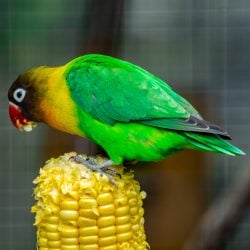 Feeding Exotic BirdsJune 20, 2025Is Corn On the Cob Safe for Pet Birds?
Feeding Exotic BirdsJune 20, 2025Is Corn On the Cob Safe for Pet Birds? Bird & Parrot AnatomyJune 19, 2025Would You Like a Comprehensive Guide for Training Your Bird?
Bird & Parrot AnatomyJune 19, 2025Would You Like a Comprehensive Guide for Training Your Bird?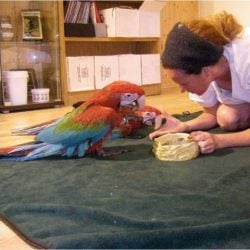 Feeding Exotic BirdsJune 19, 2025Here Are Three (Video) Strategies to Help Your Bird Forage
Feeding Exotic BirdsJune 19, 2025Here Are Three (Video) Strategies to Help Your Bird Forage Bird BehaviorJune 13, 2025Why Do Some Parrots Struggle in Captivity?
Bird BehaviorJune 13, 2025Why Do Some Parrots Struggle in Captivity?
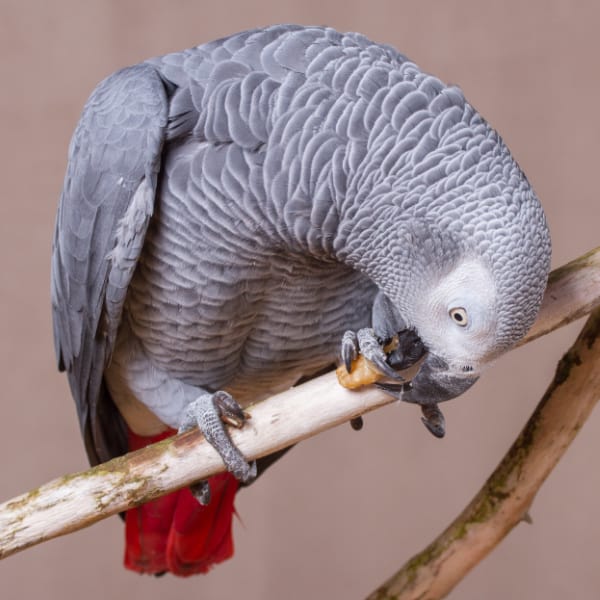
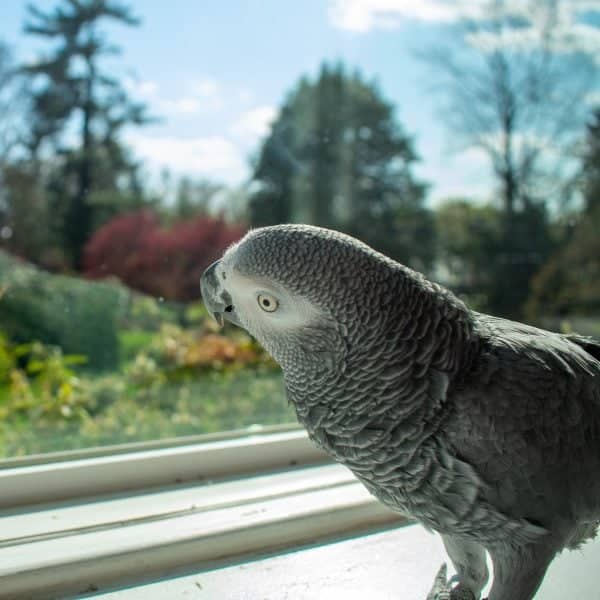
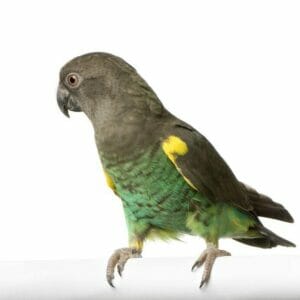


MMinLamesa
5 Aug 2018We have 3 pecan trees in out back yard and Kula gets pecans year round-she loves them, they’re the first thing she goes for when I put her seeds & nuts dish out in the afternoon.
WindyCityParrot
5 Aug 2018That’s really cool MMinLarnesa
WindyCityParrot
5 Aug 2018🙂